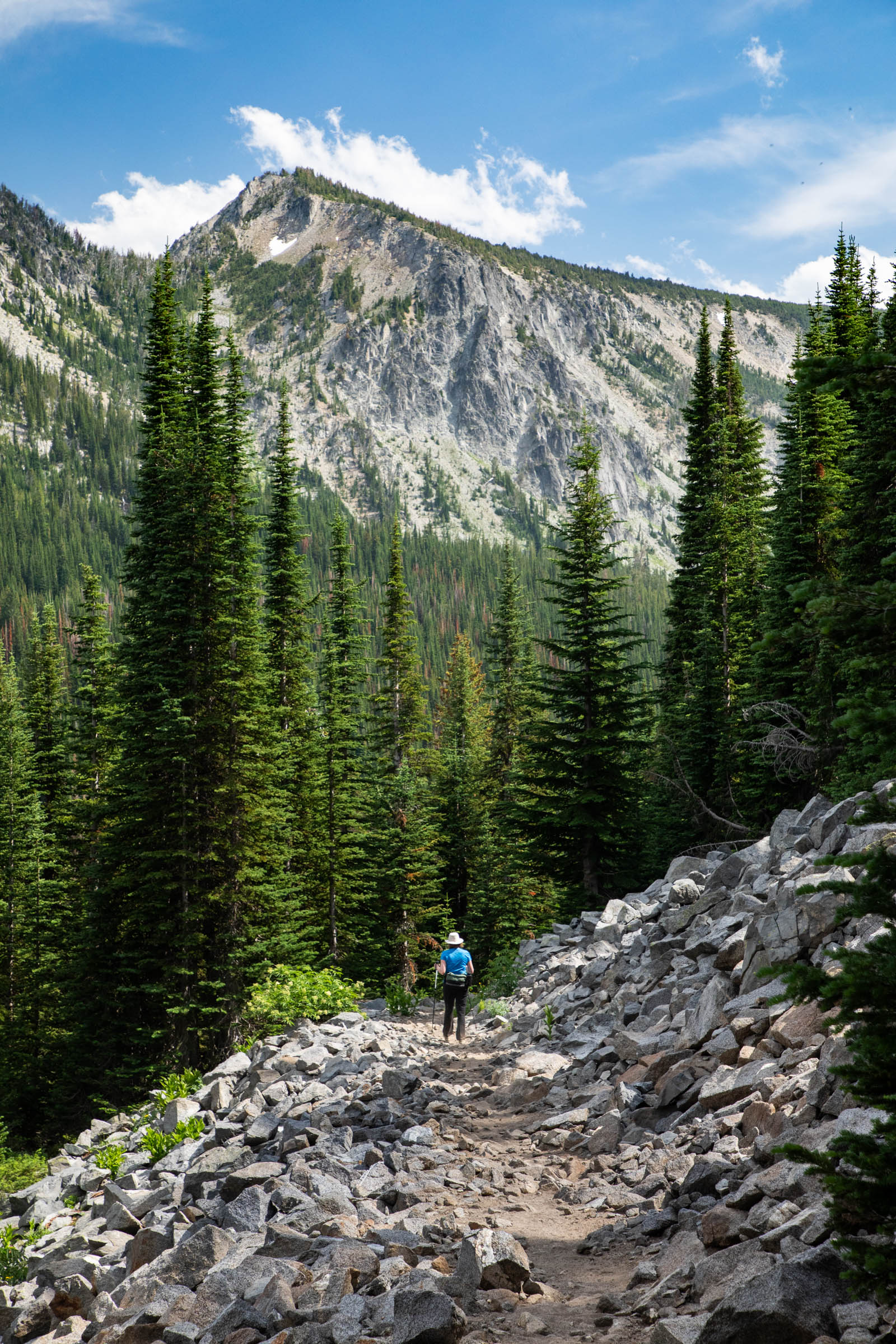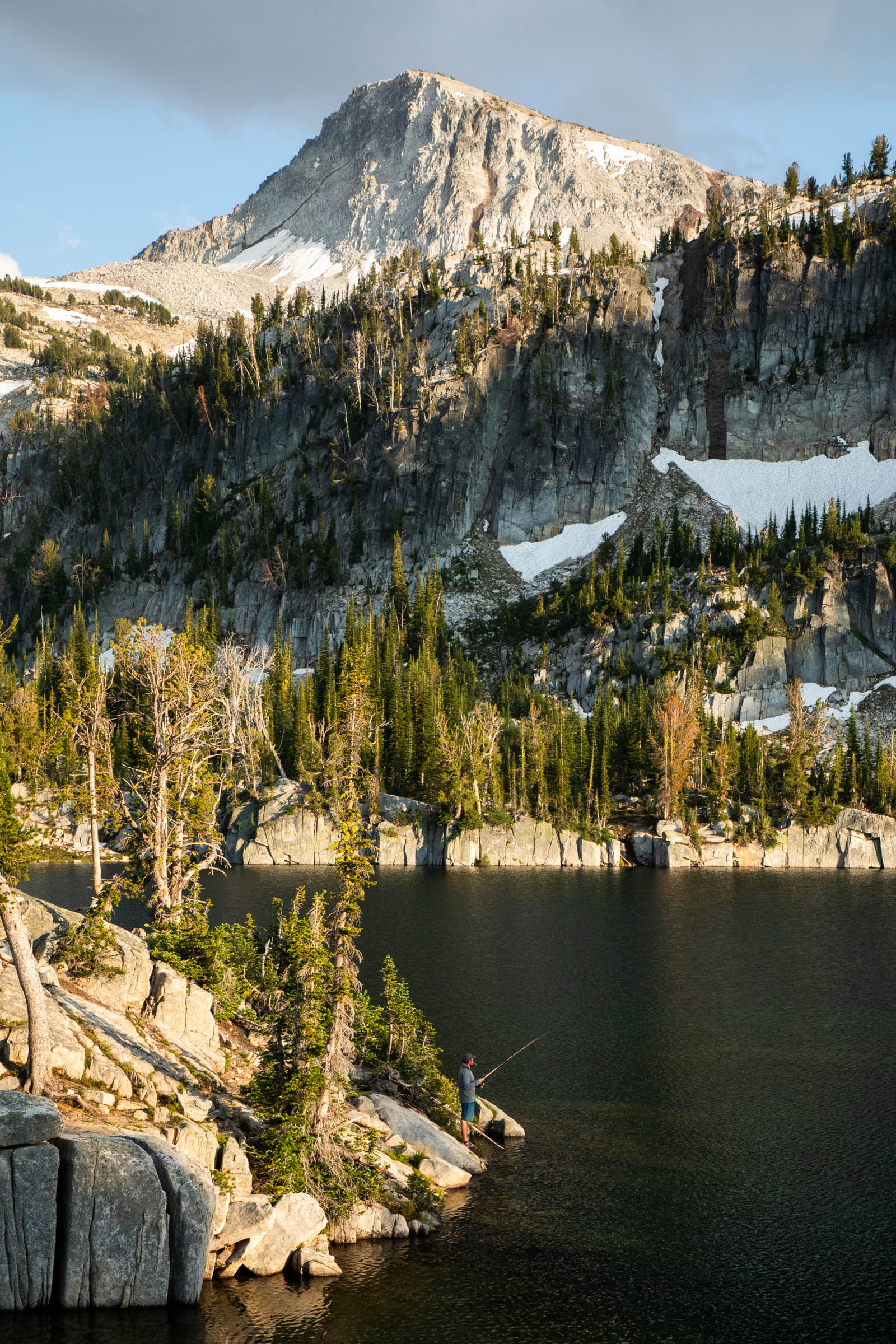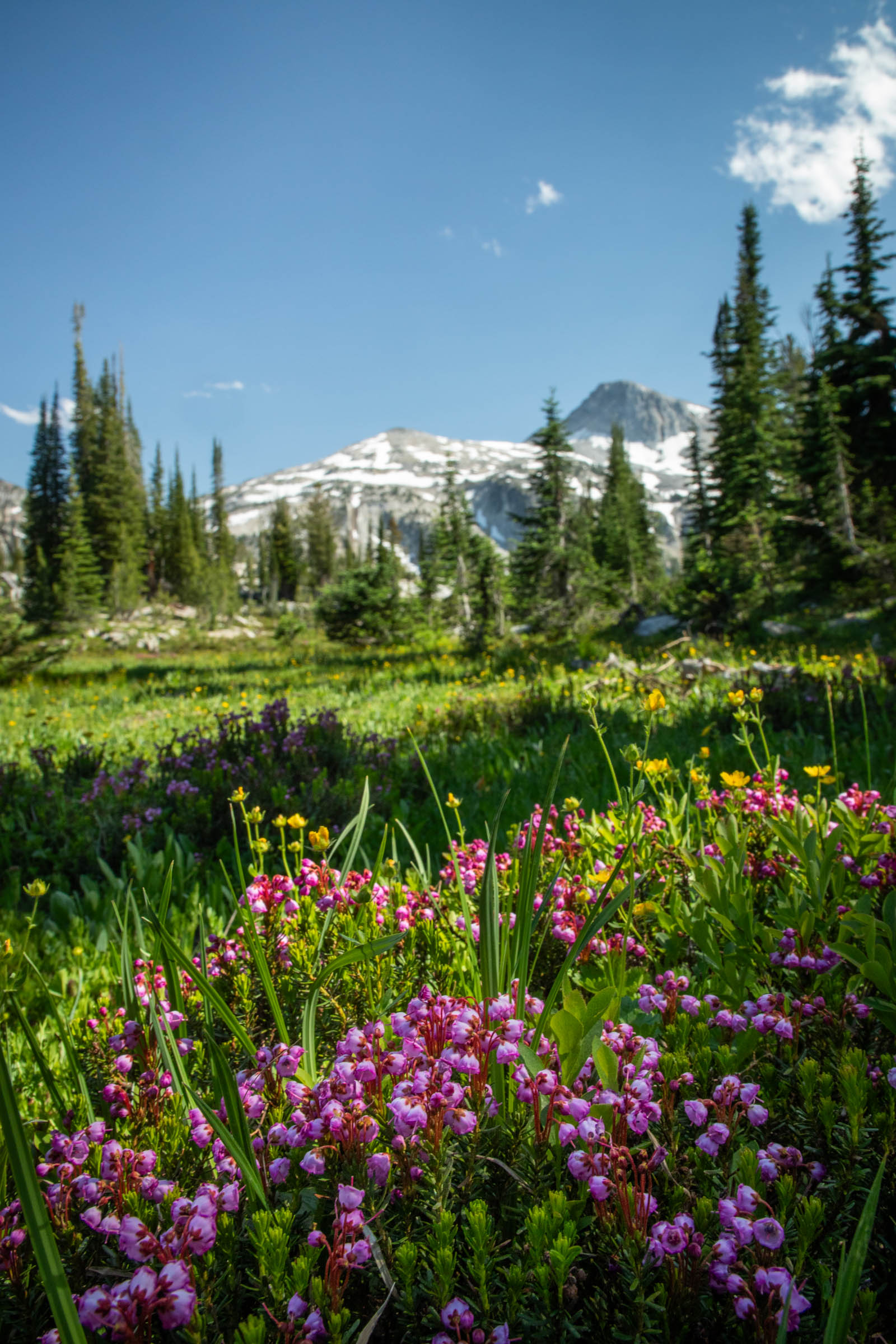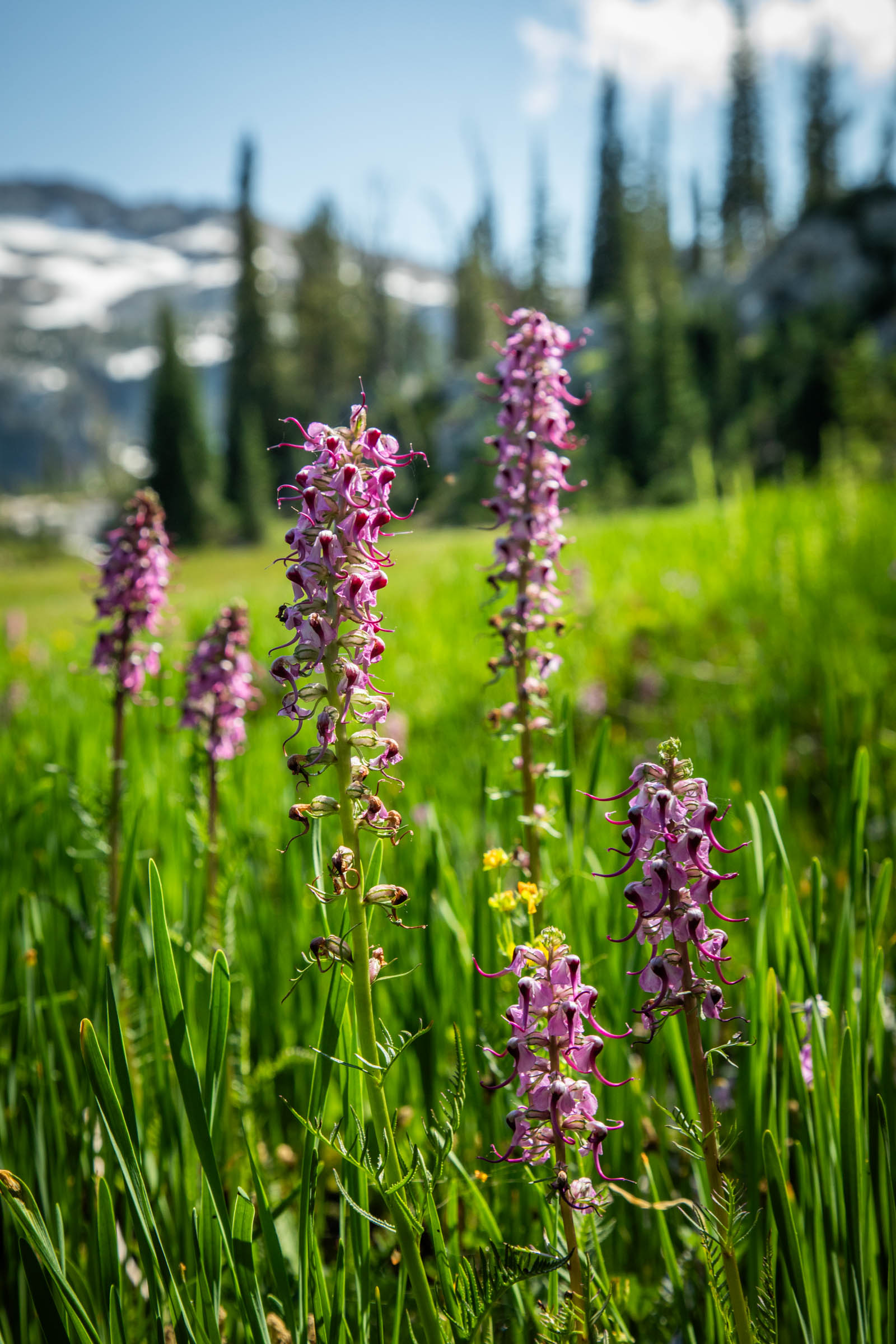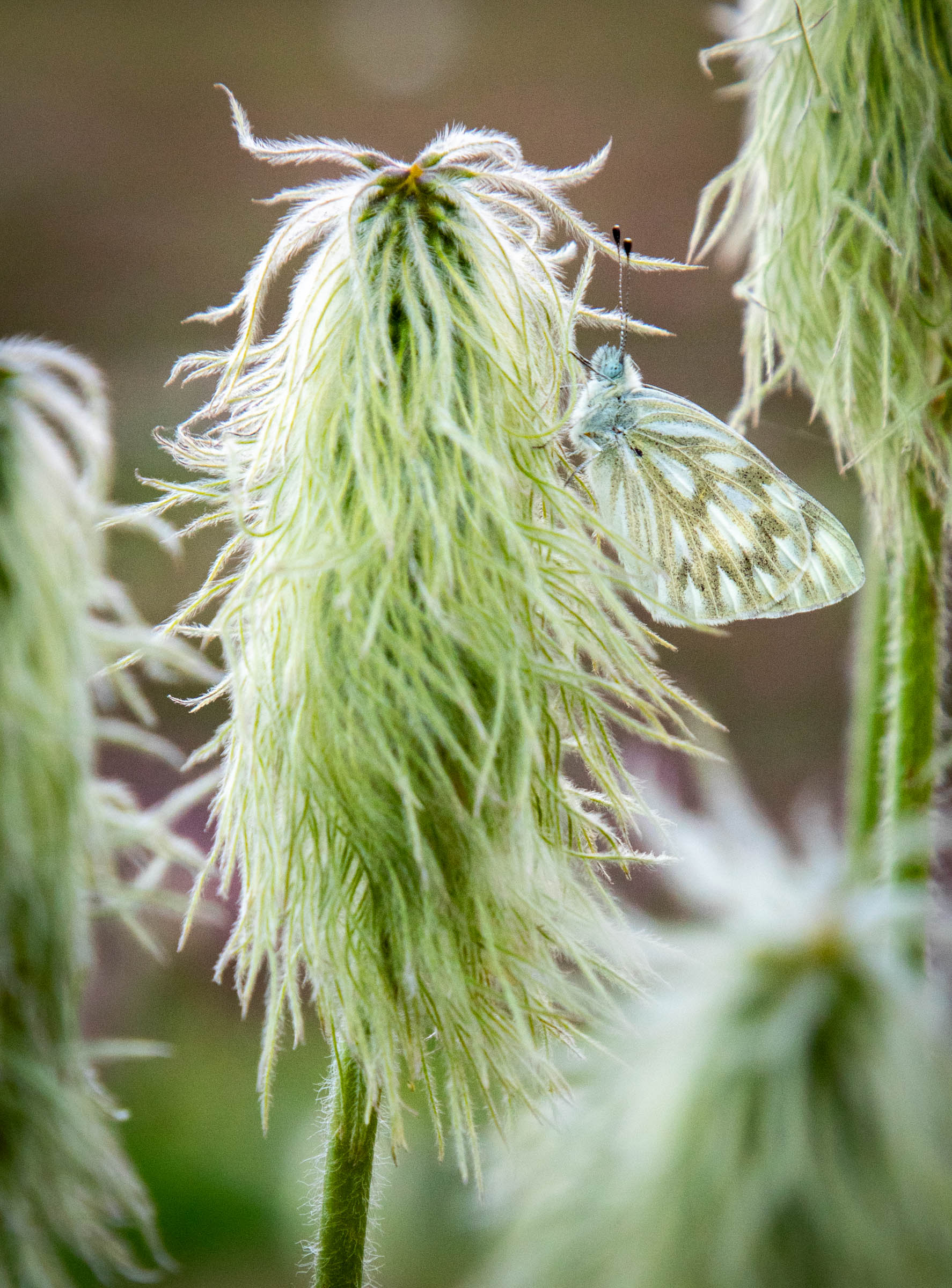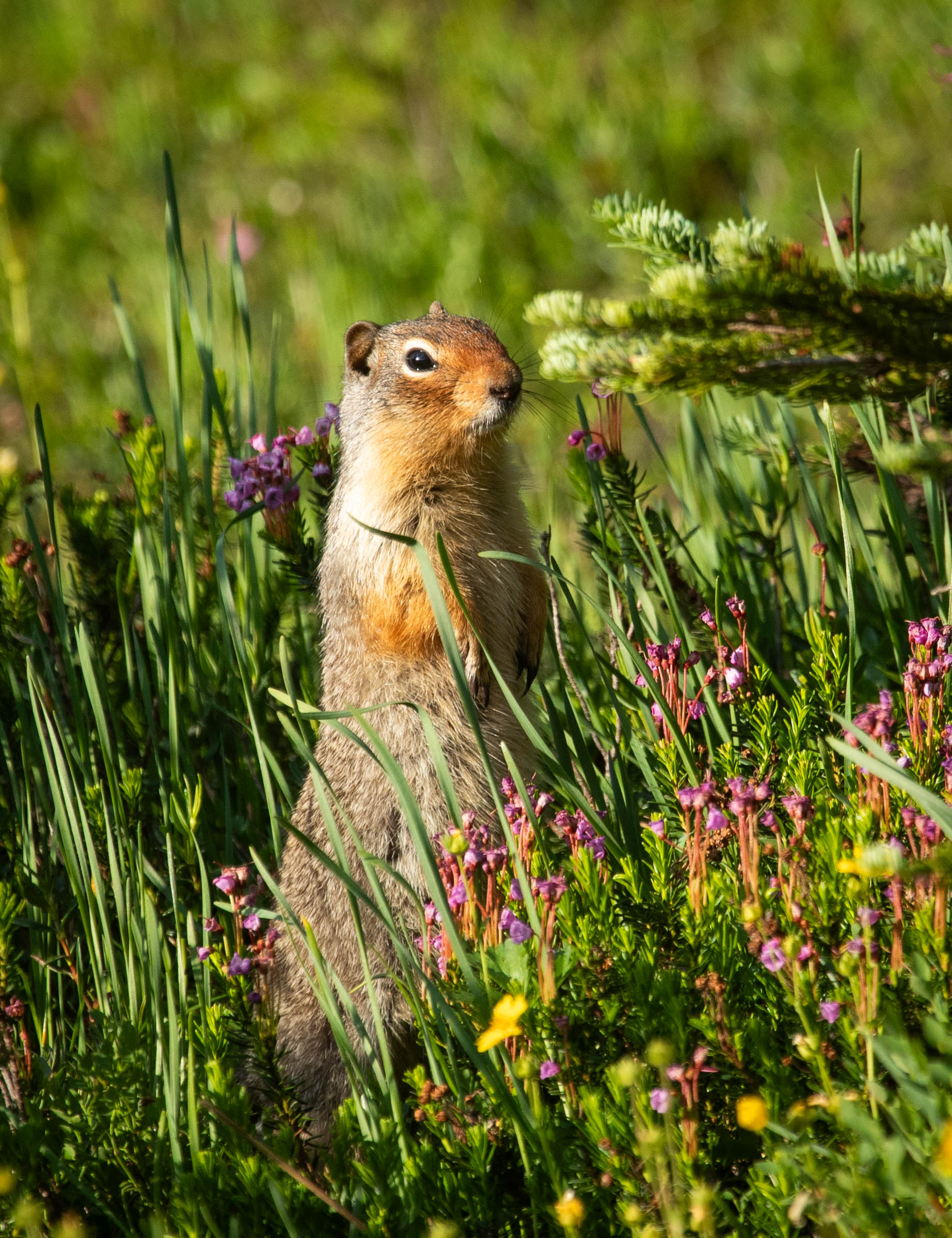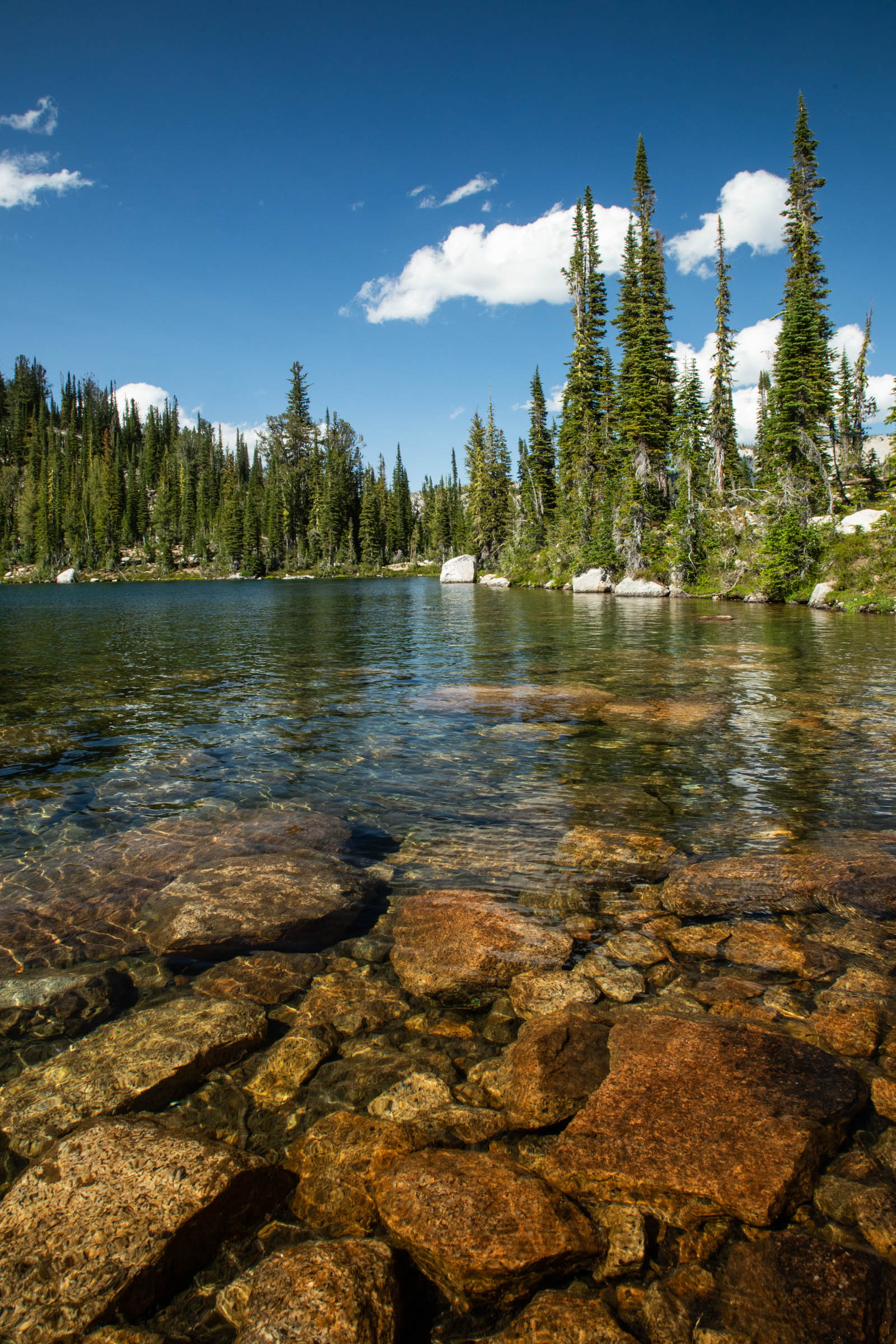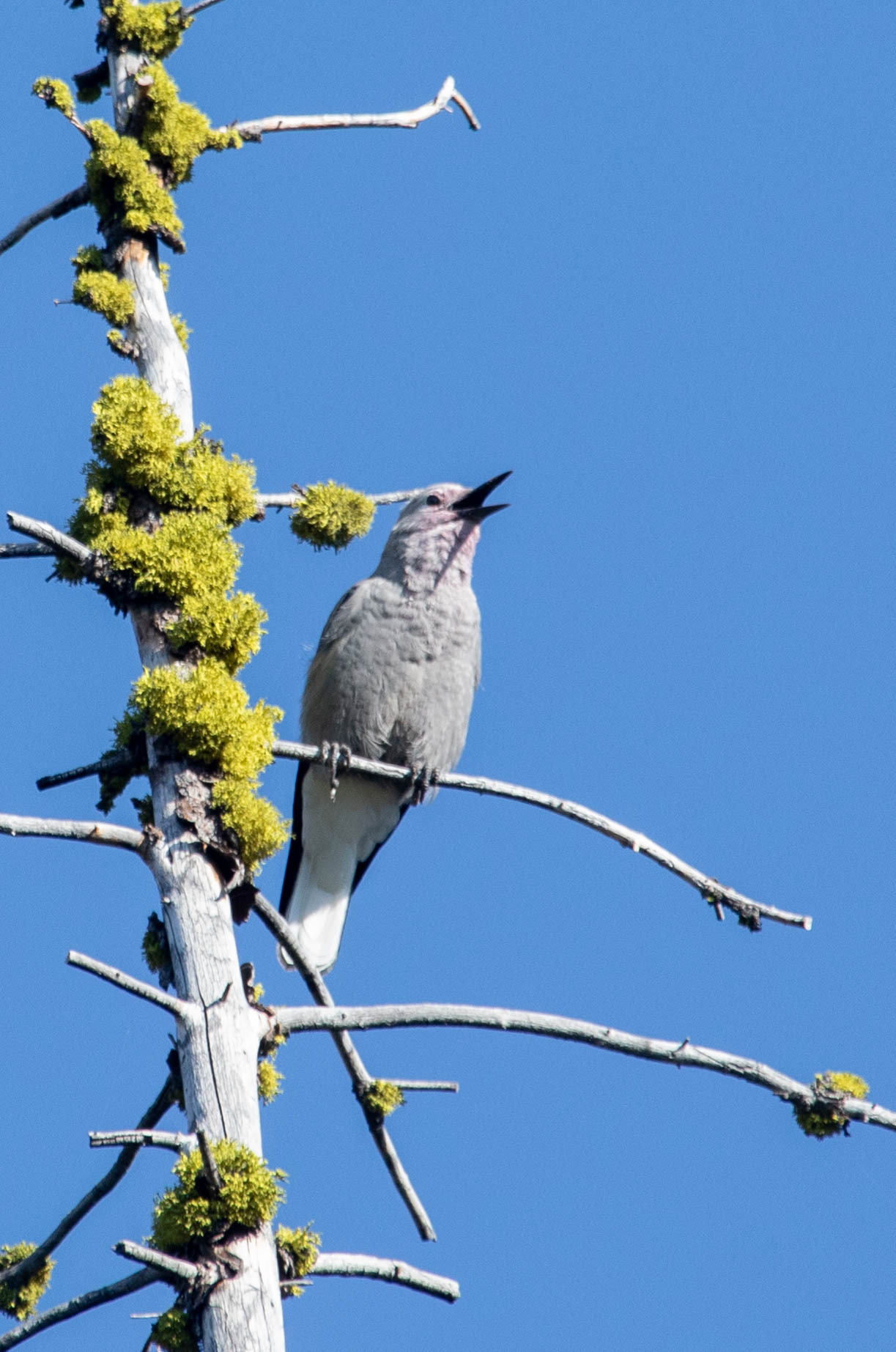The Wallowa mountains are a small range of high peaks in the northeastern corner of Oregon – between the mellower Blue Mountains to the west, and the depths of Hell’s Canyon to the east. These mountains might be off the radar of much of the public, but passionate backpackers from all over the country flock here to visit the alpine meadows and lakes during the brief summer.
First, we got a taste of the Wallowas with a day-trip to the Chimney Lake area. The trail headed over the Lostine River on a sturdy bridge.
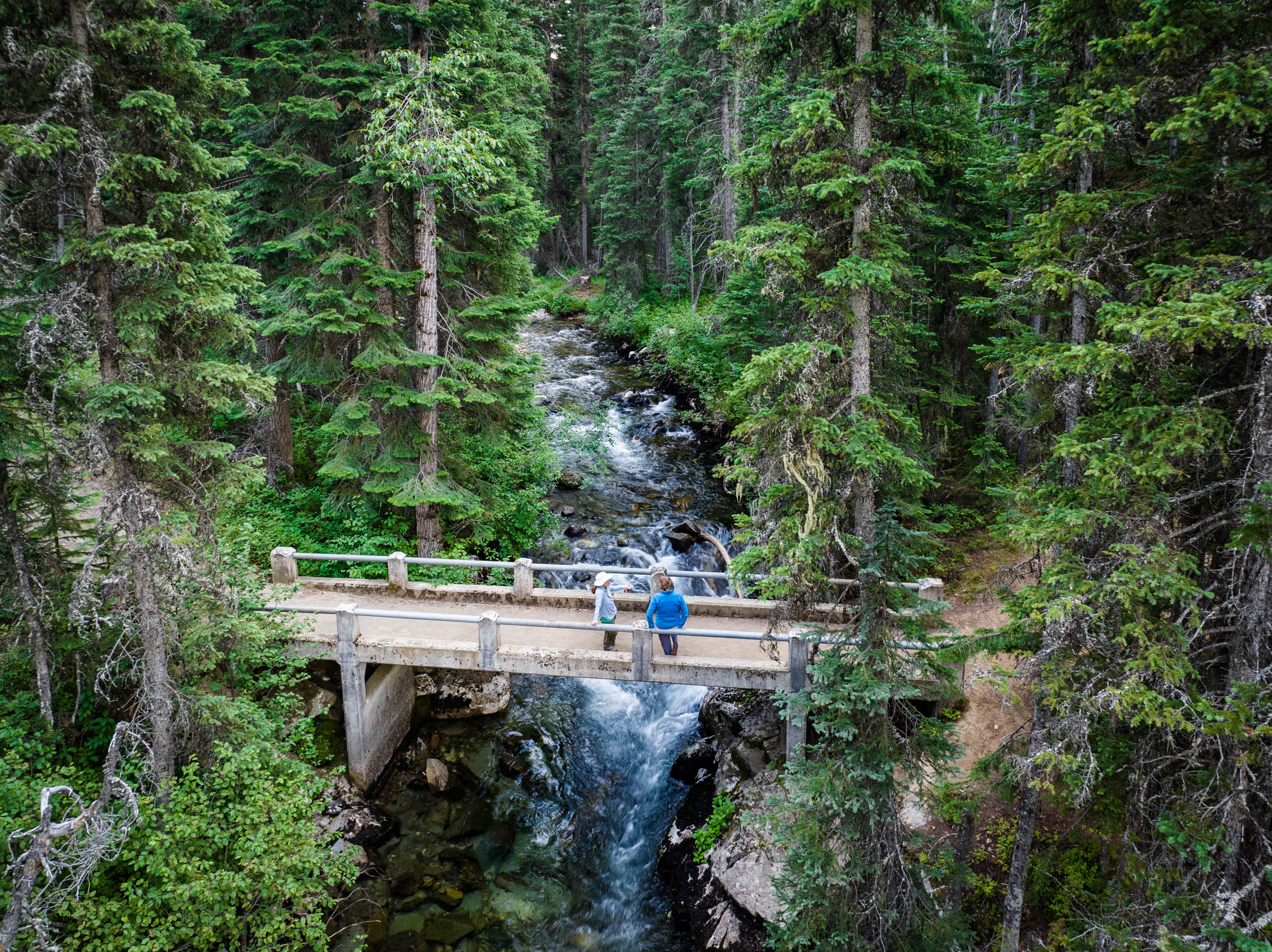
The trail started relatively high at 5,000ft elevation. After a bunch of sweat and heavy breathing, the trail reached nearly 8,000ft elevation to this spot near Hobo Lake.
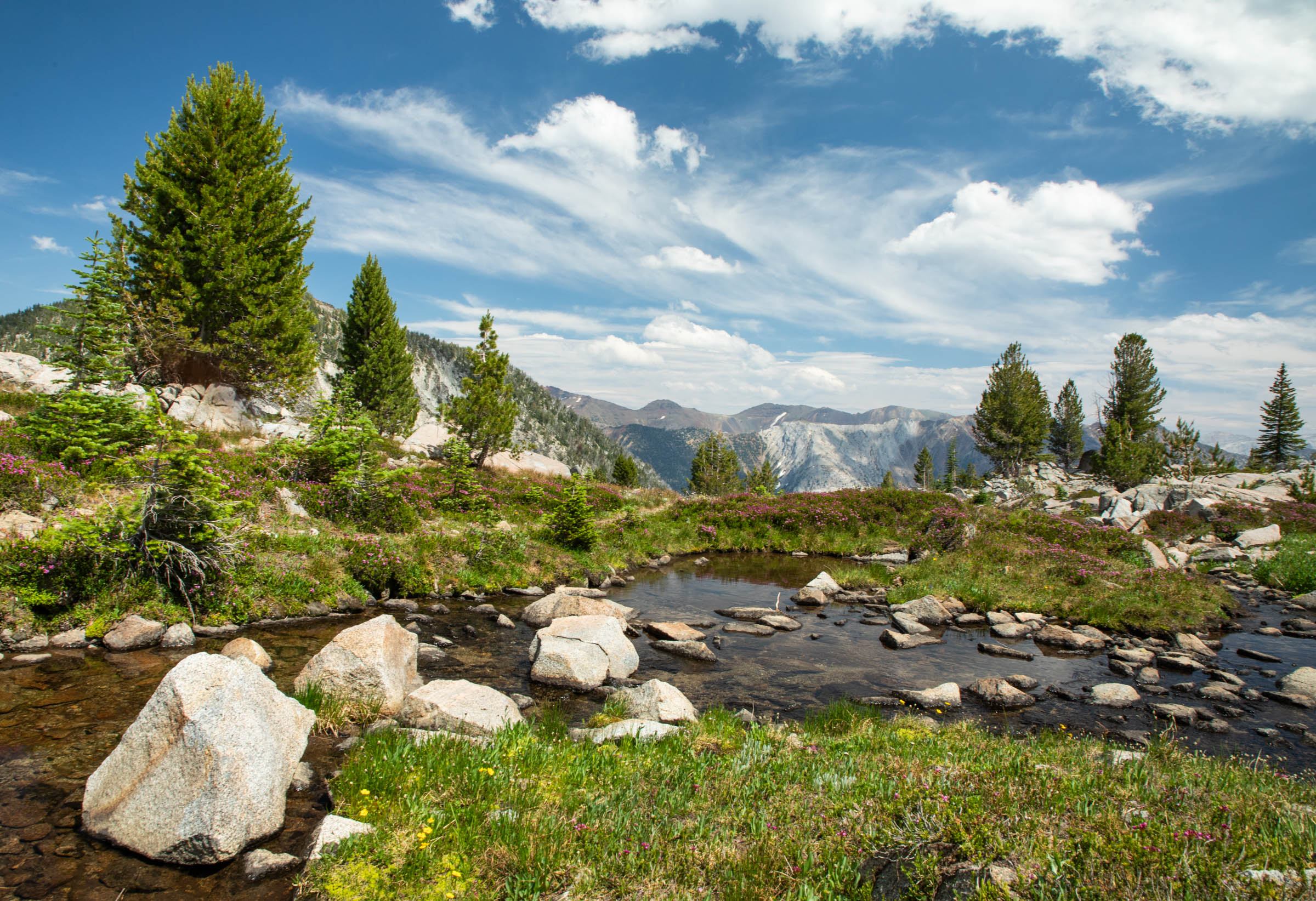
This particular area is pretty quiet – we didn’t see a lot of other hikers. But of course, we weren’t alone… a few Cassin’s Finches poked around the trailside trees and alpine tundra.
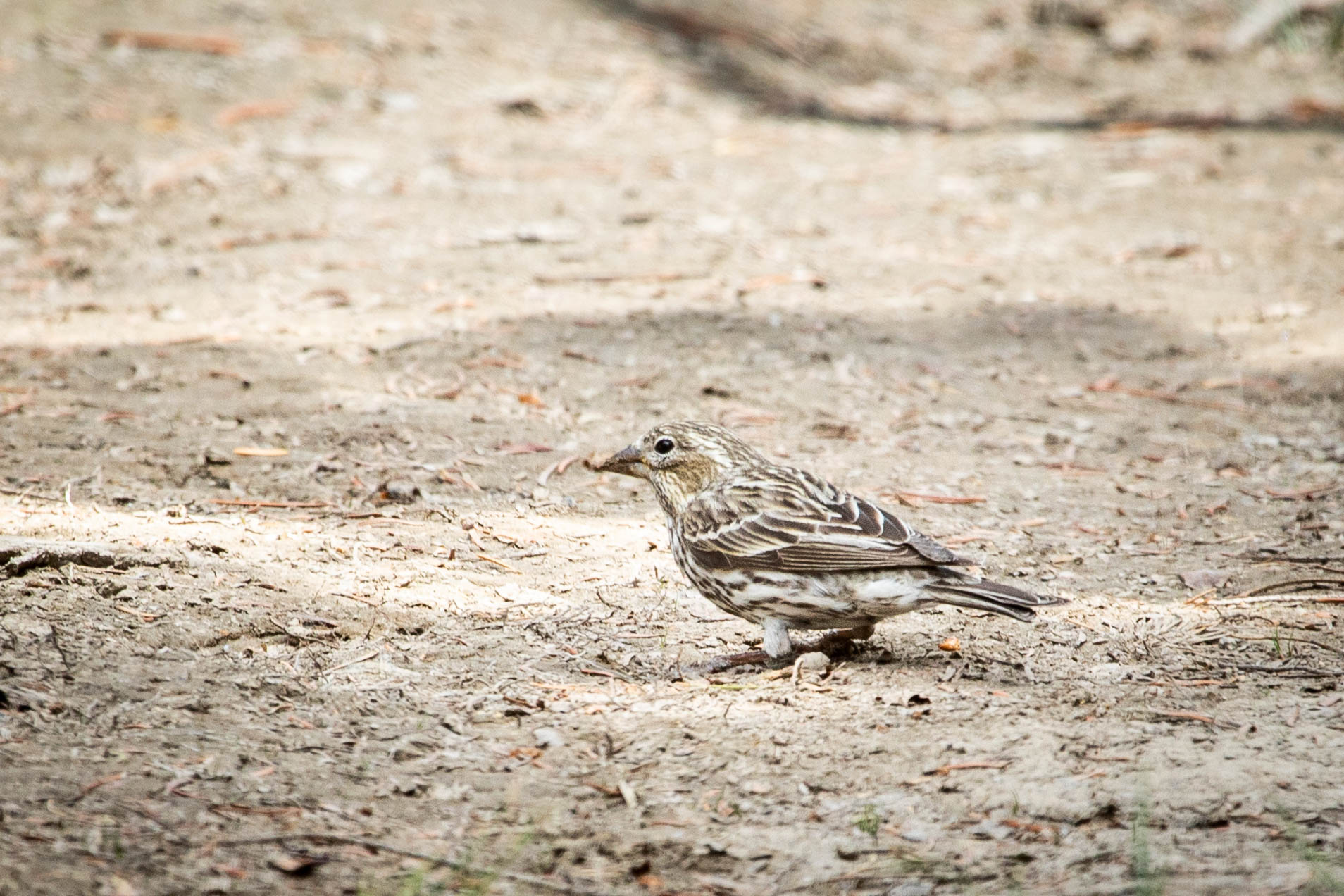
We were visiting these mountains in the middle of peak flower bloom. Everywhere we looked, another new species was blooming. This image is a collage of just some of the different varieties we saw over the course of this trip.
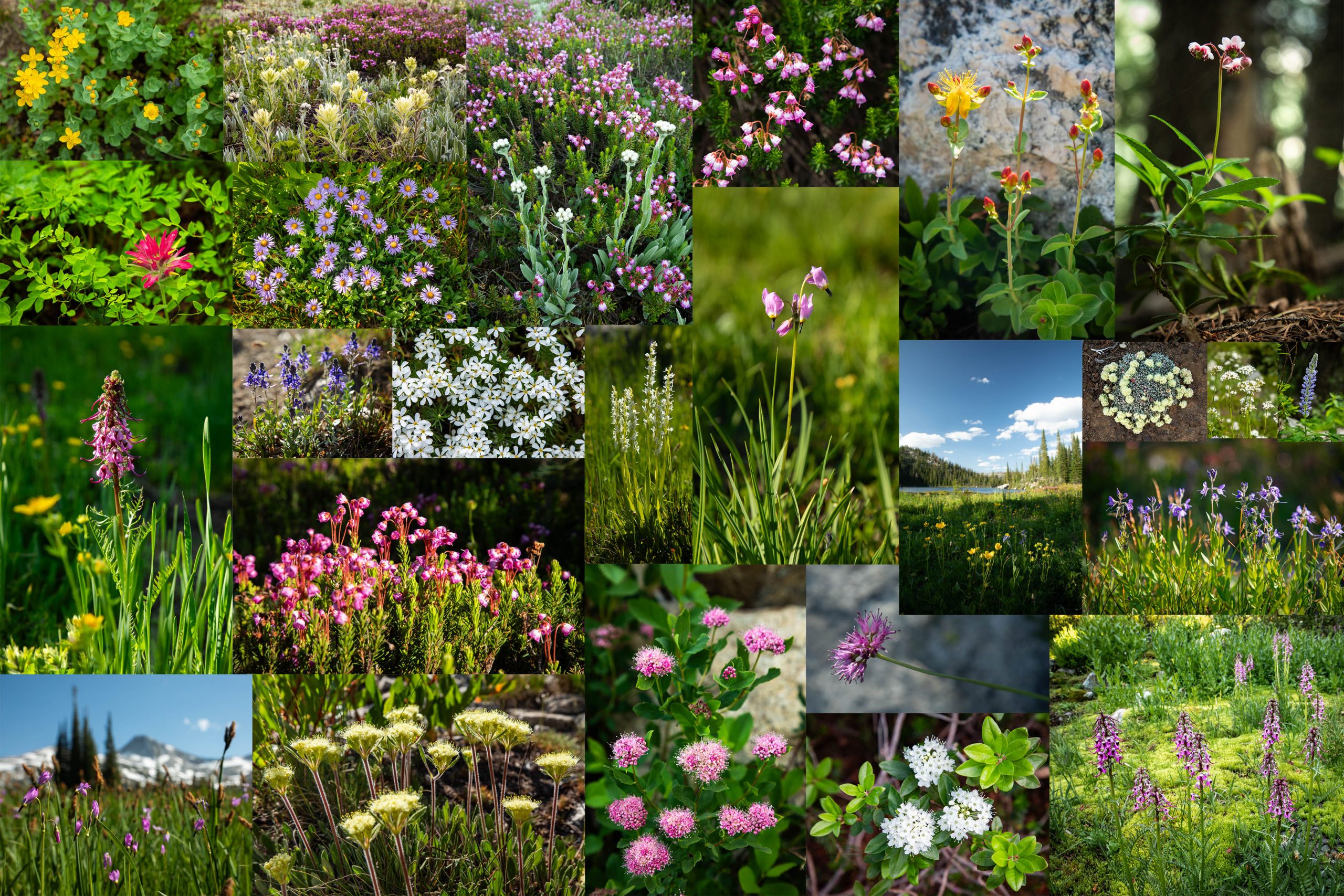
It wasn’t just flowers decorating the landscape, these Fragile Ferns like to grow in the full alpine sun.
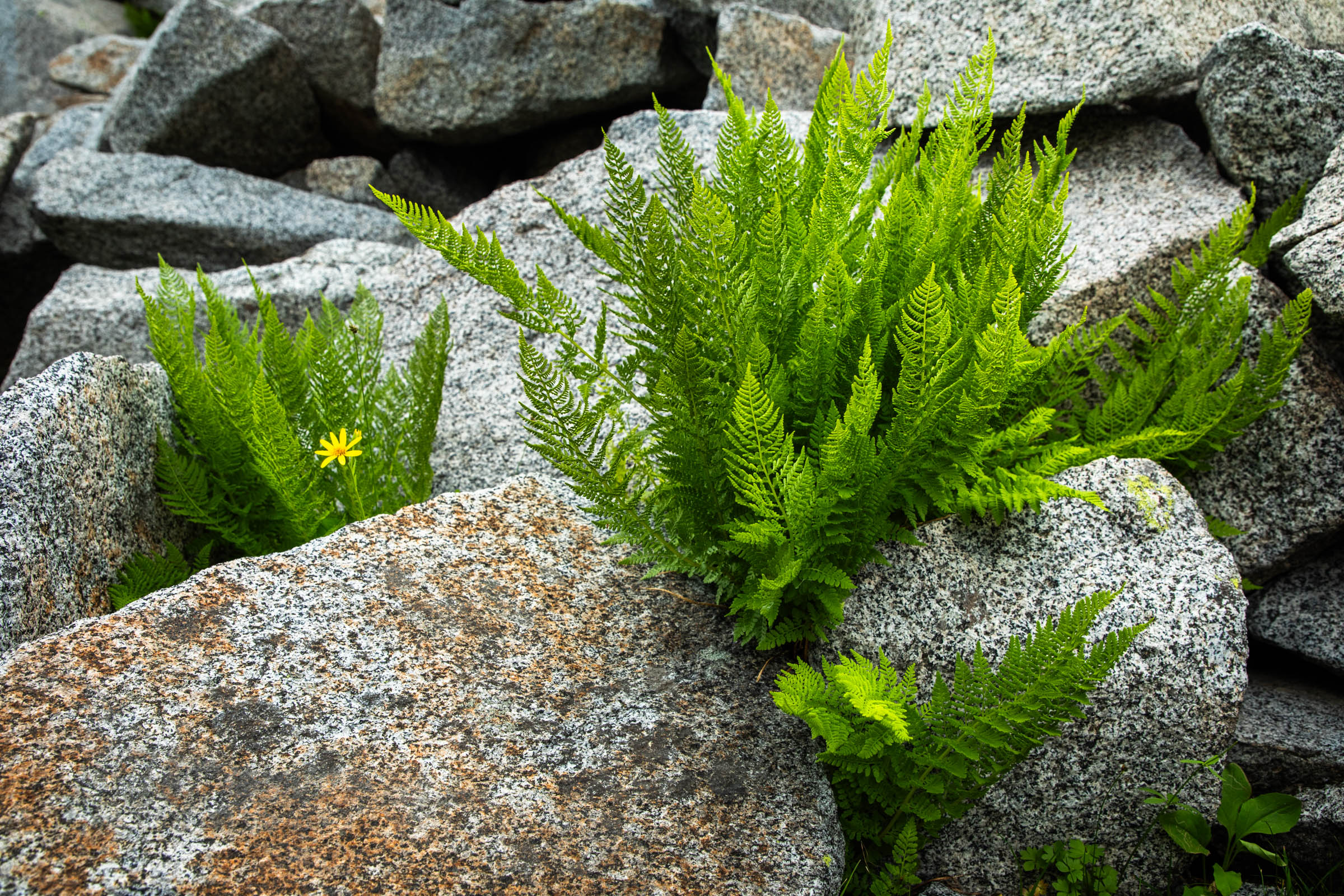
This was just a day-trip though. We headed down the mountain, saving our energy for a longer hike in the coming days.
We drove along the Lostine River a few miles to the end of the road at the Two Pan trailhead. From there, the trail wound upwards through old forests then along the edge of the vast meadows of the East Fork of the Lostine River. This is a classic U-shaped glacial valley stretching for miles. Dominating the view at the head of the valley is the distinctive summit of Eagle Cap .
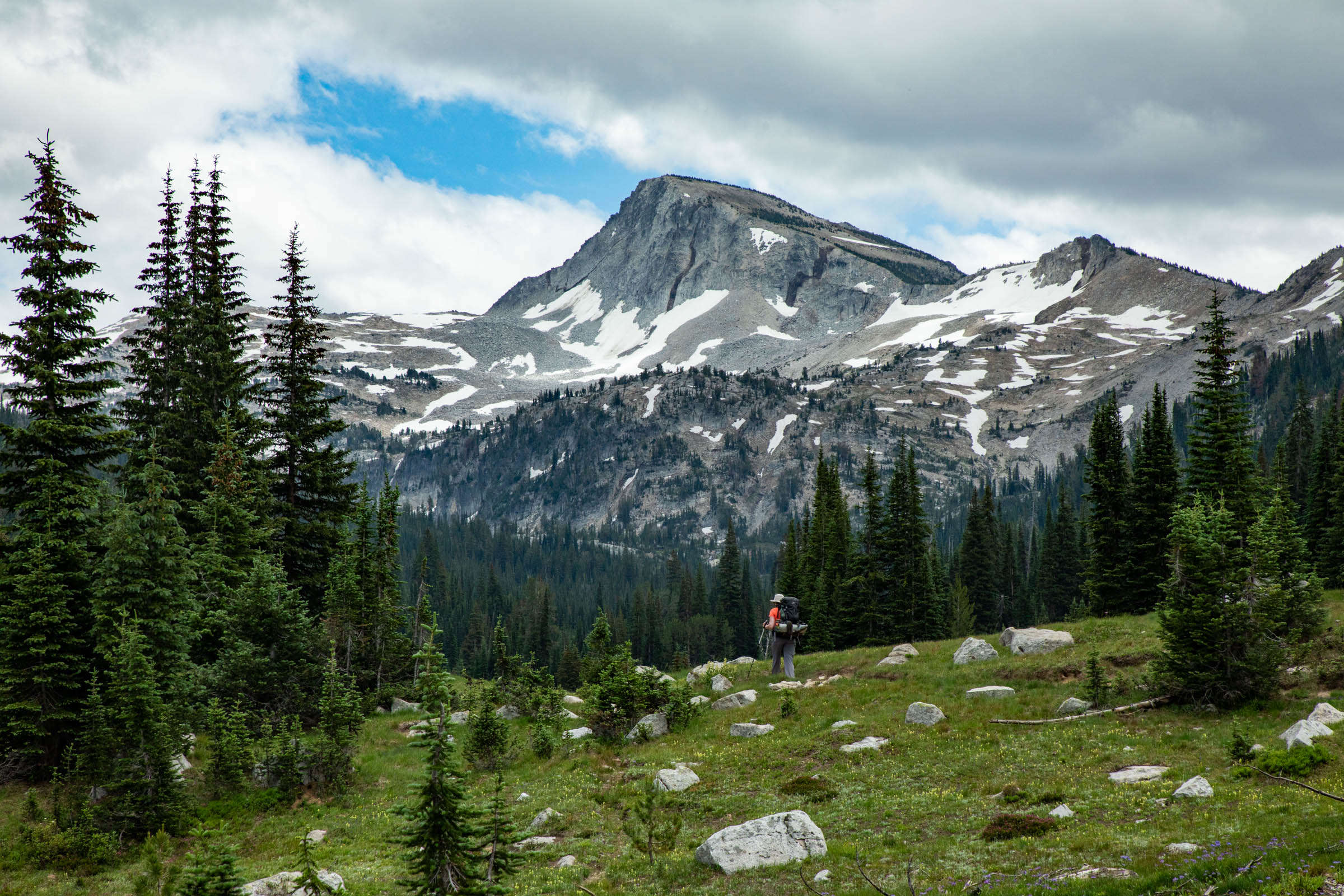
We reached our destination, Mirror Lake, in the afternoon and made camp on the edge of the granite slabs encircling the lake.
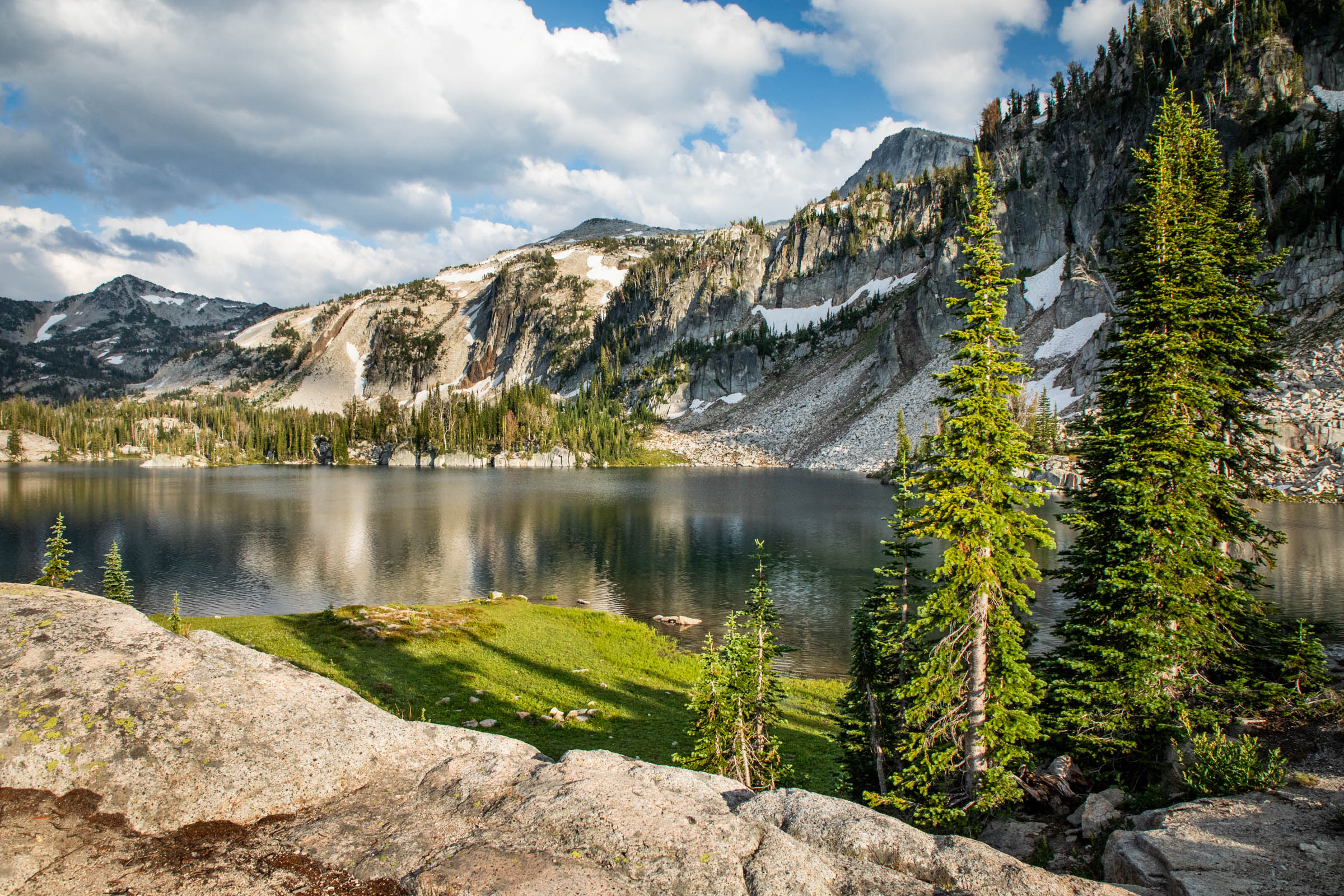
Mirror Lake is a beautiful place miles from the nearest pavement, but it’s not a secret. In the brief summer season, the number of people visiting can get a bit much – recent years have seen a backpacking population boom. Here someone is fishing from their camp across the way.
Hopefully, as the popularity of places like this continue to grow, the forest service can help manage and support recreation on this public land in a sustainable way, maintaining things like simple latrines, and working to keep people from stomping-around too much.
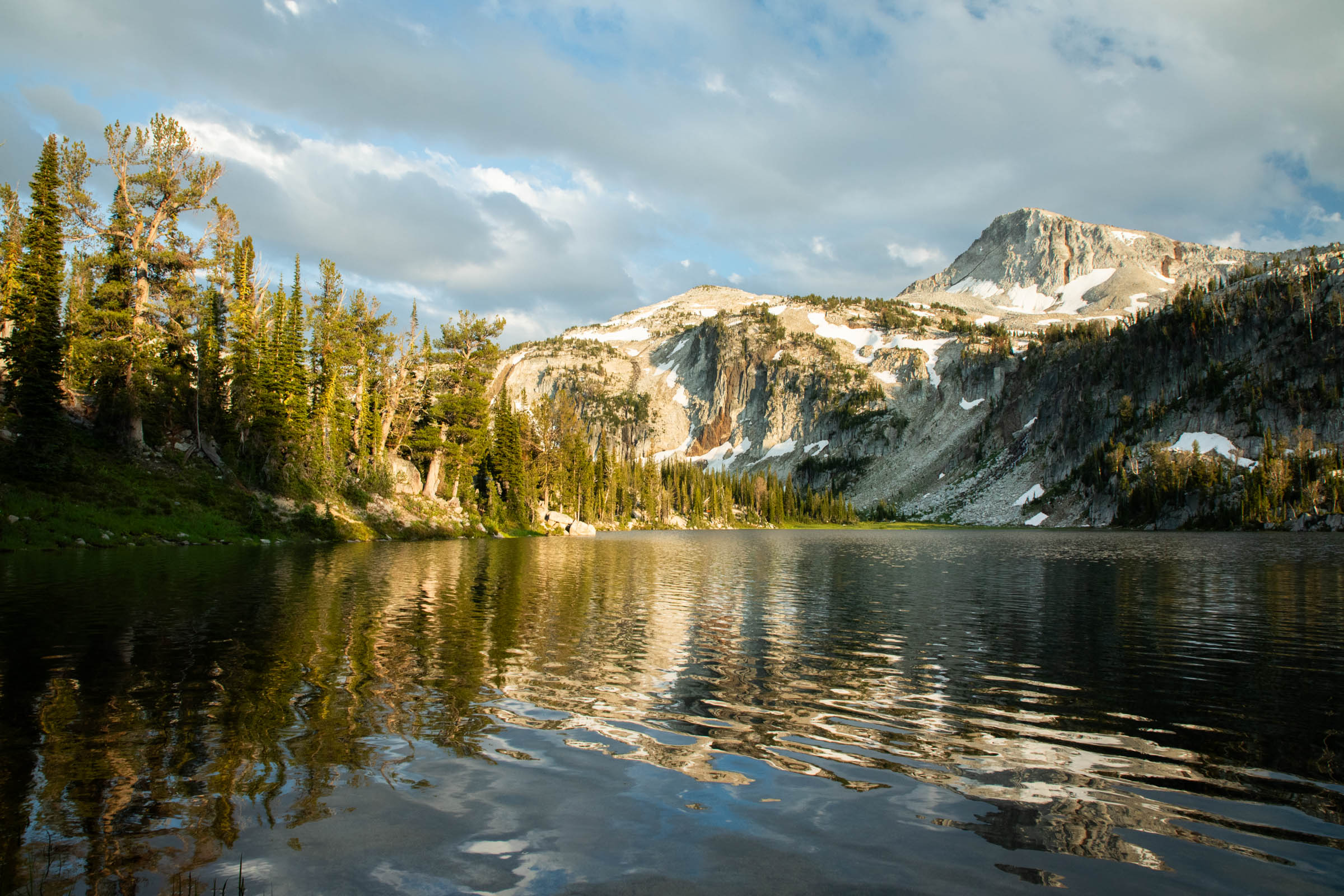
From Mirror Lake, it’s a couple miles up a trail to the summit of Eagle Cap.
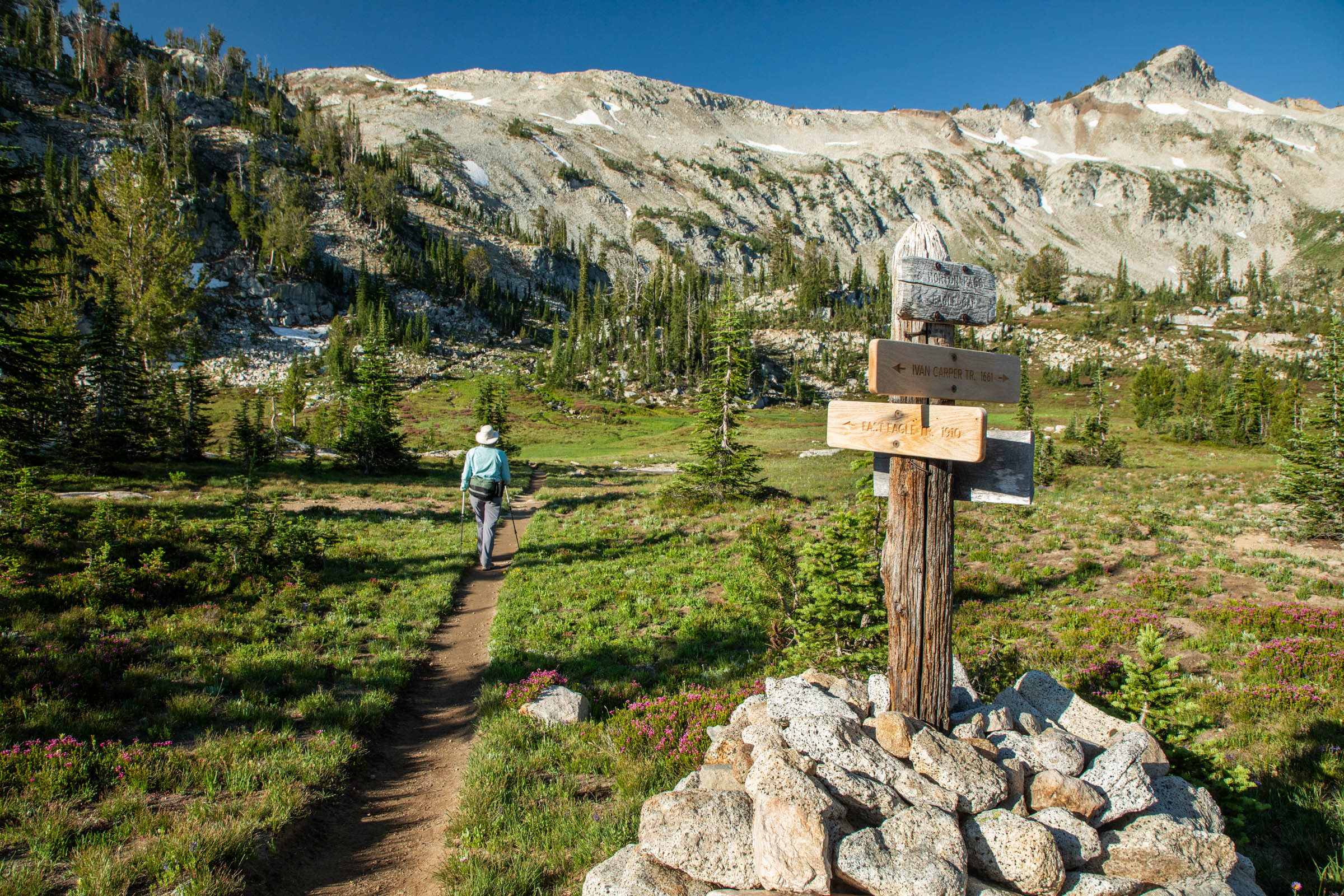
The trail cuts across alpine meadows, then switchbacks up rocky slopes. The trees get small and sparse.
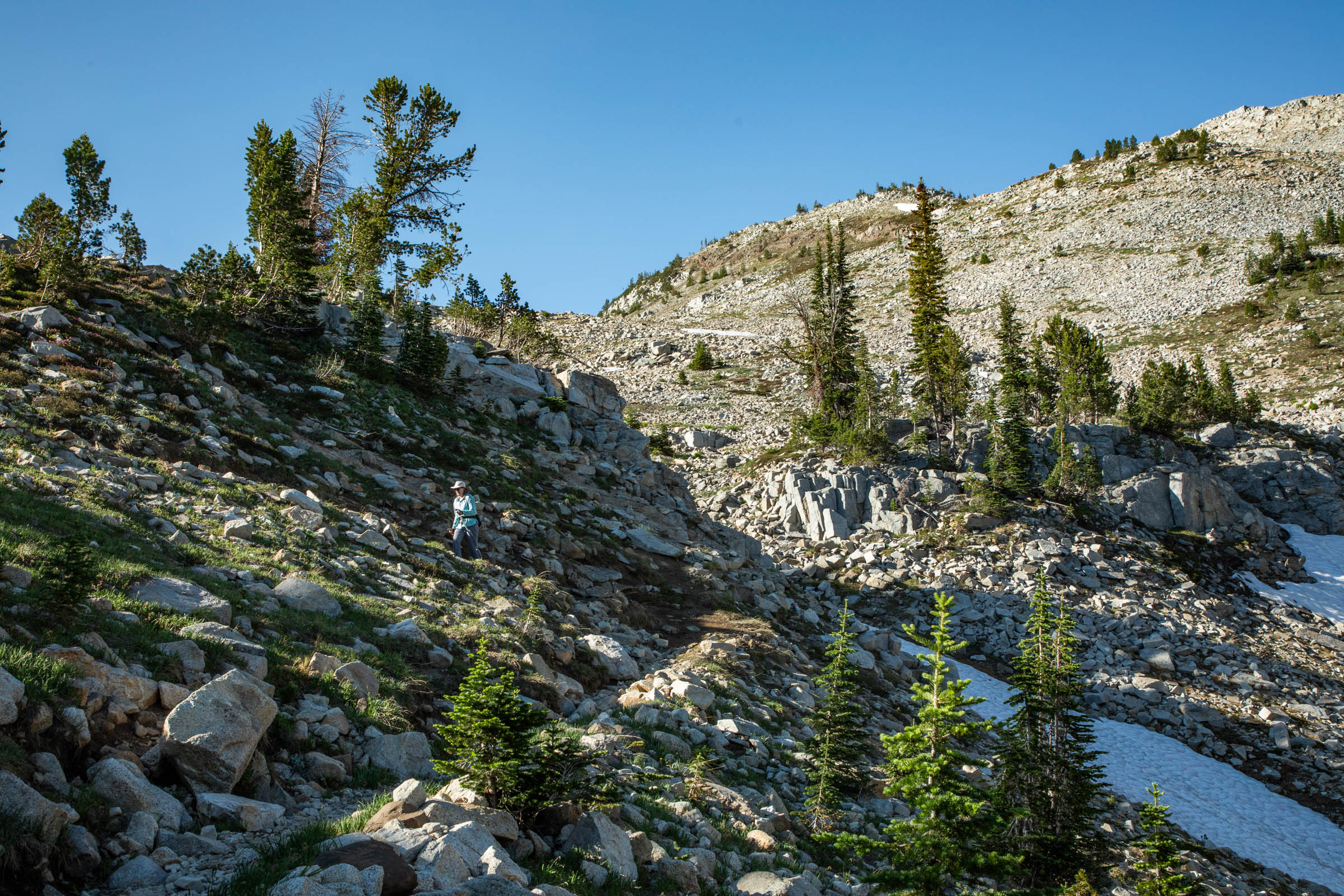
From this height, you can look back at your progress – Below and beyond Upper Lake, the meadows of the East Fork Lostine River extend to the distance.
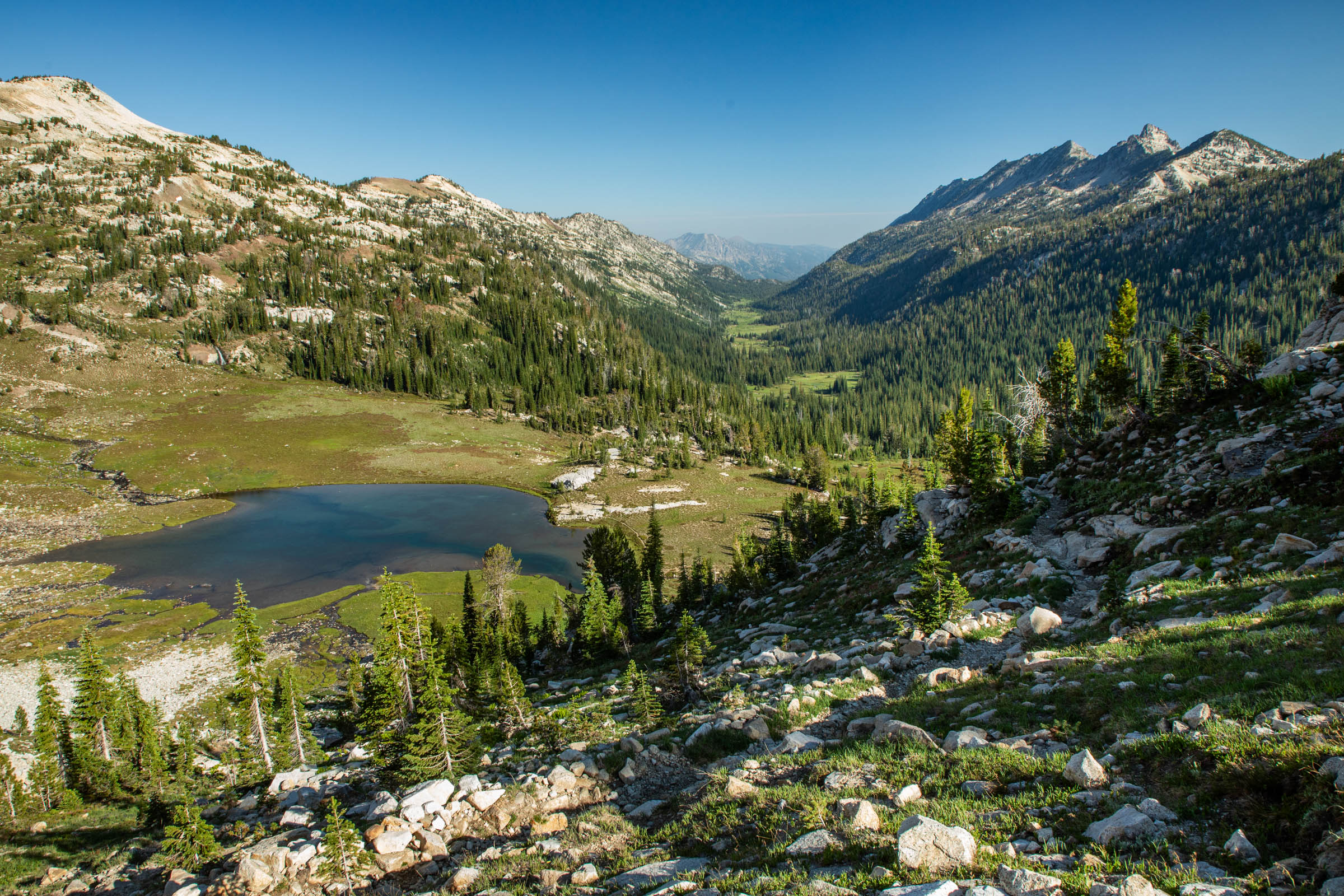
For the most part, this trail is pretty straightforward. But at over 8,000ft elevation by late July, some bits haven’t yet melted out.
Soon, the trees are mostly gone, and it’s an open alpine ramble to the summit of Eagle Cap.

To the south, numerous mountains and valleys make up the rest of the Wallowa Mountains. The pointy peak to the left of this image is called Needle Point.

The flowers continued the whole way – this hardy plant was growing in the loose, dry soil close to the summit of Eagle Cap. I haven’t been able to locate the names of all these varieties, but will add them if/when I do.
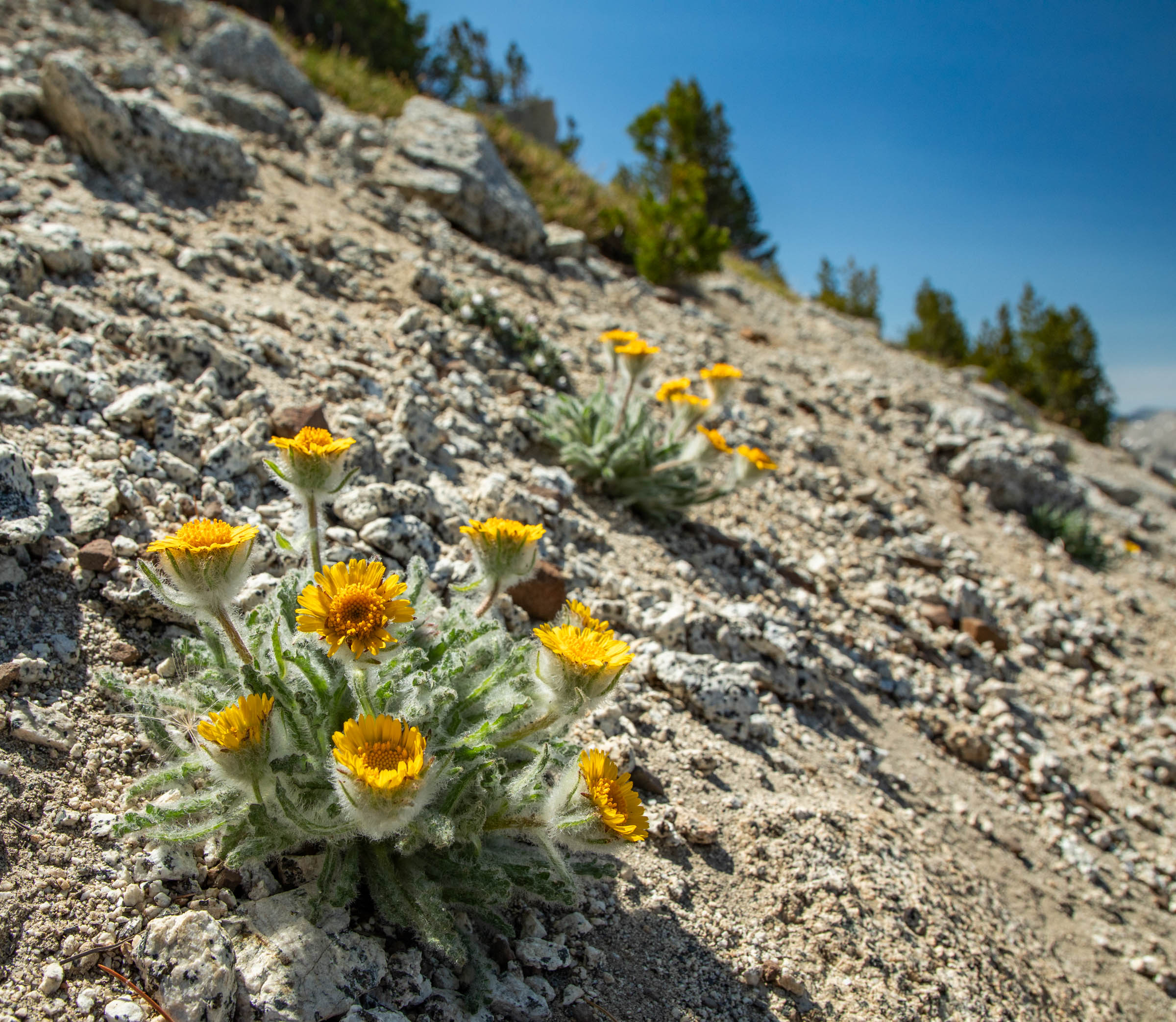
To the north, this colorful mountain has a borrowed name – the Matterhorn. It doesn’t look much like its namesake, but is striking nonetheless.
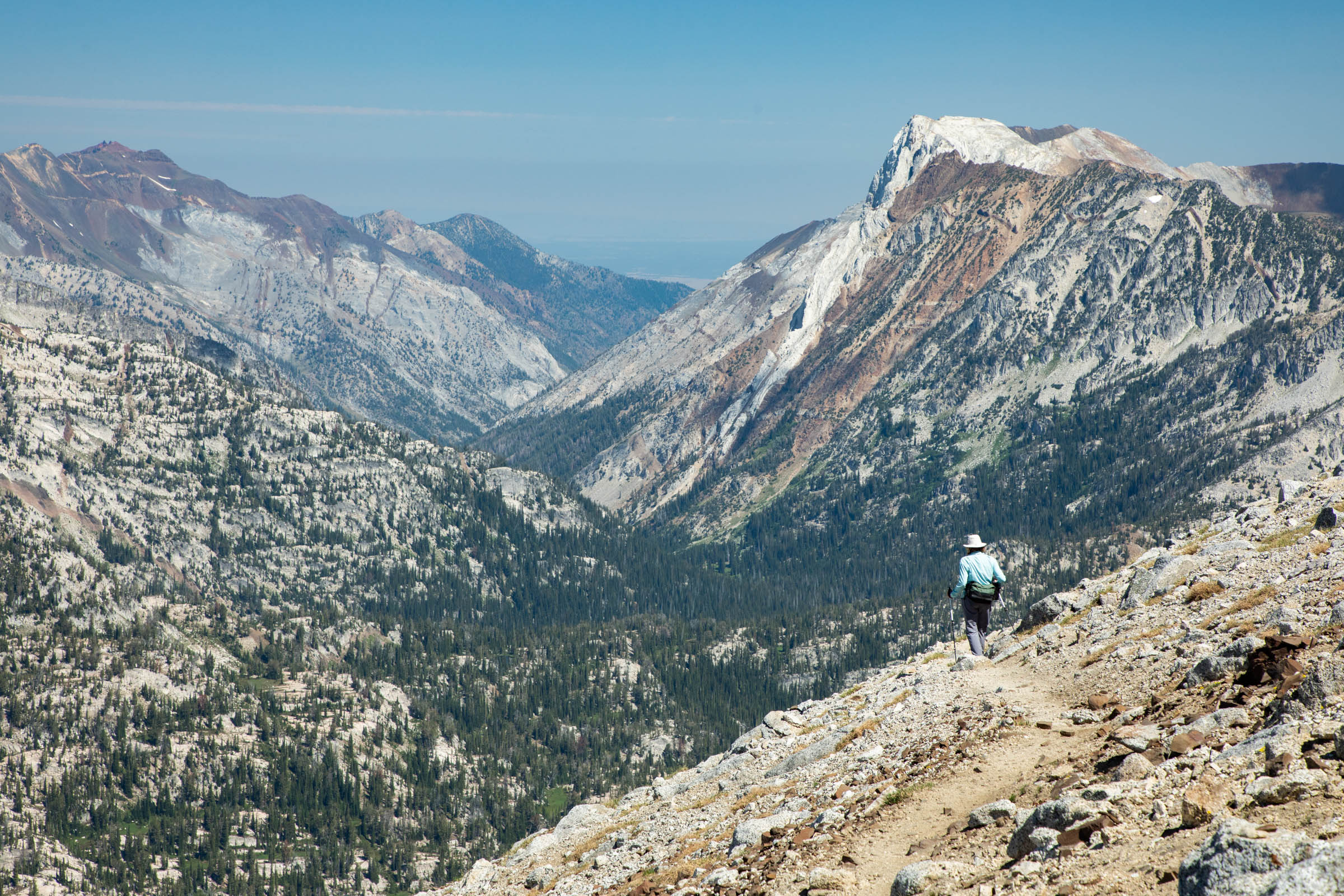
Everywhere you look in a place like this new views are perfectly framed.
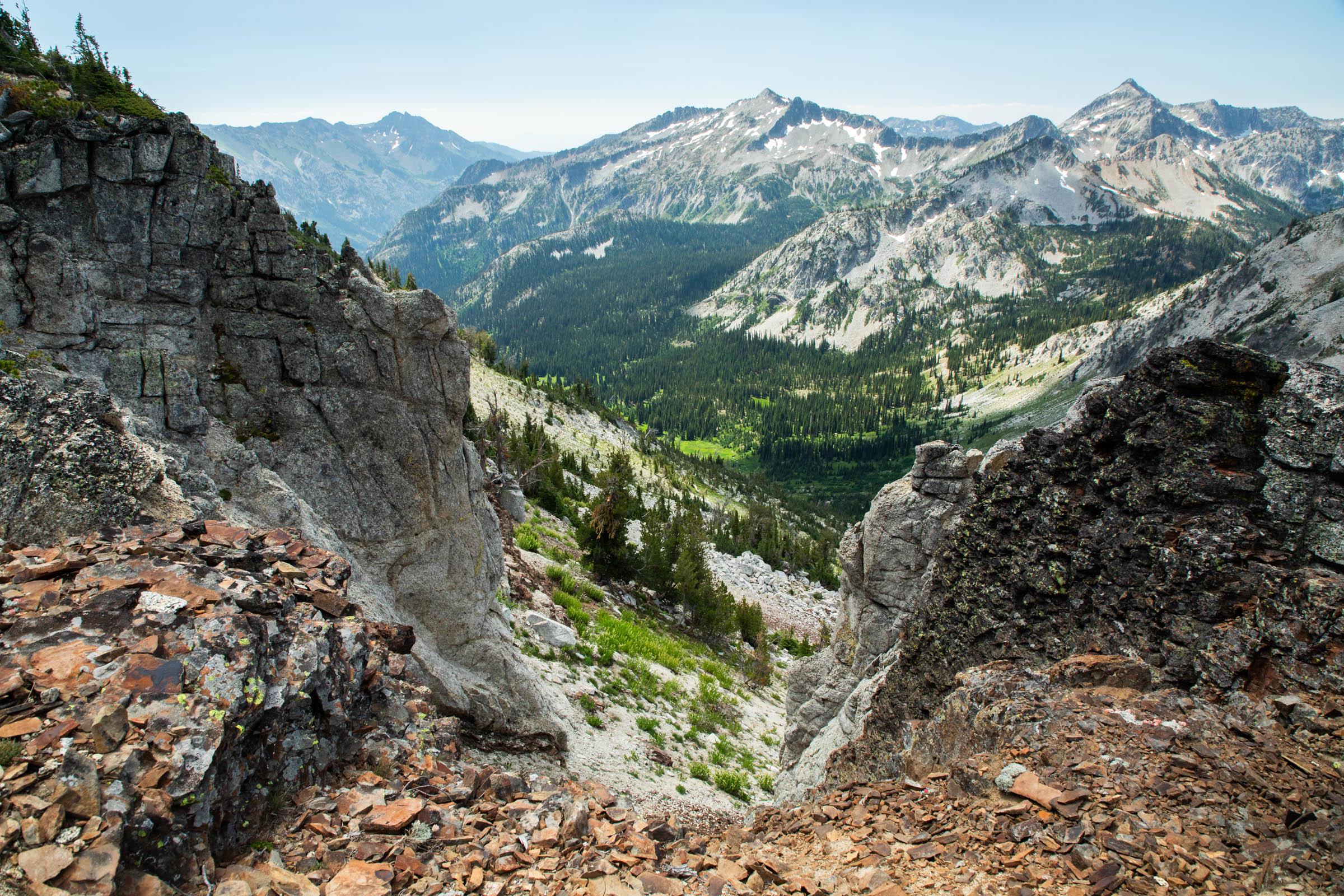
Clouds drifted past, providing intermittent relief from the harsh alpine sun. The waters from springs and melting snow rippled below.
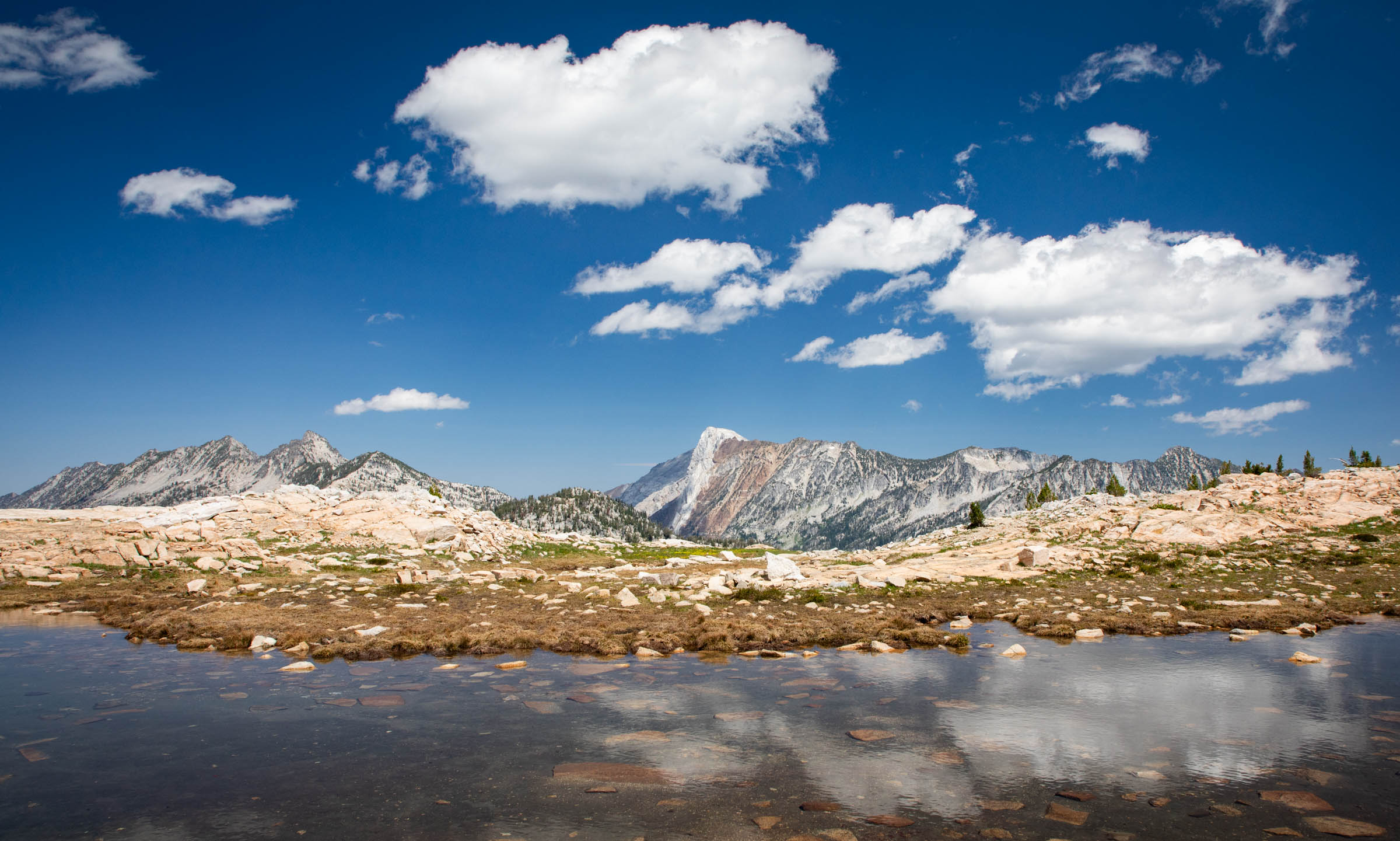
This image might look like an over-processed/saturated image – looking down at the middle of Upper Lake. But these colors are basically true to life, though a polarizing filter helps cut the glare of the water.

Back in the area around Mirror Lake, heather was blooming in giant clumps. This heather is also fragrant. The scent can be fleeting with the prevalent winds, but when it hits just right, it’s a delightful treat to one’s senses.
One of my favorite alpine flowers is Elephanthead. Each floret on the stalk is shaped like an elephant’s head – a pink one. They grow only in boggy alpine meadows.
Up close, flowers are like an apparition from an alternate universe. Here a moth takes refuge for the night on the furry sides of a Western Anemone seed pod.
Our route took us past a patch of these fanciful flowers, then over a pass, through some woods…
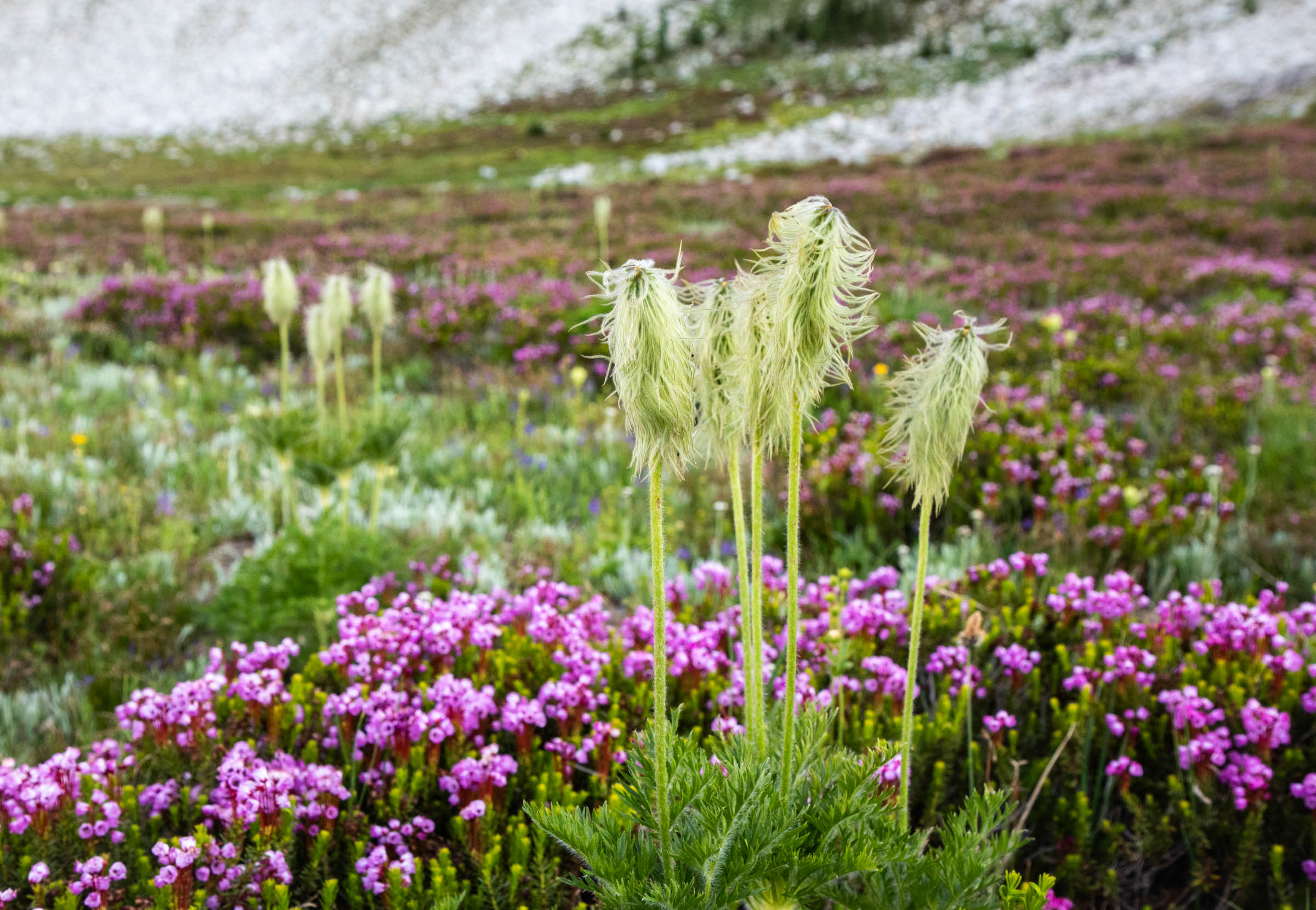
…eventually reaching Blue Lake.
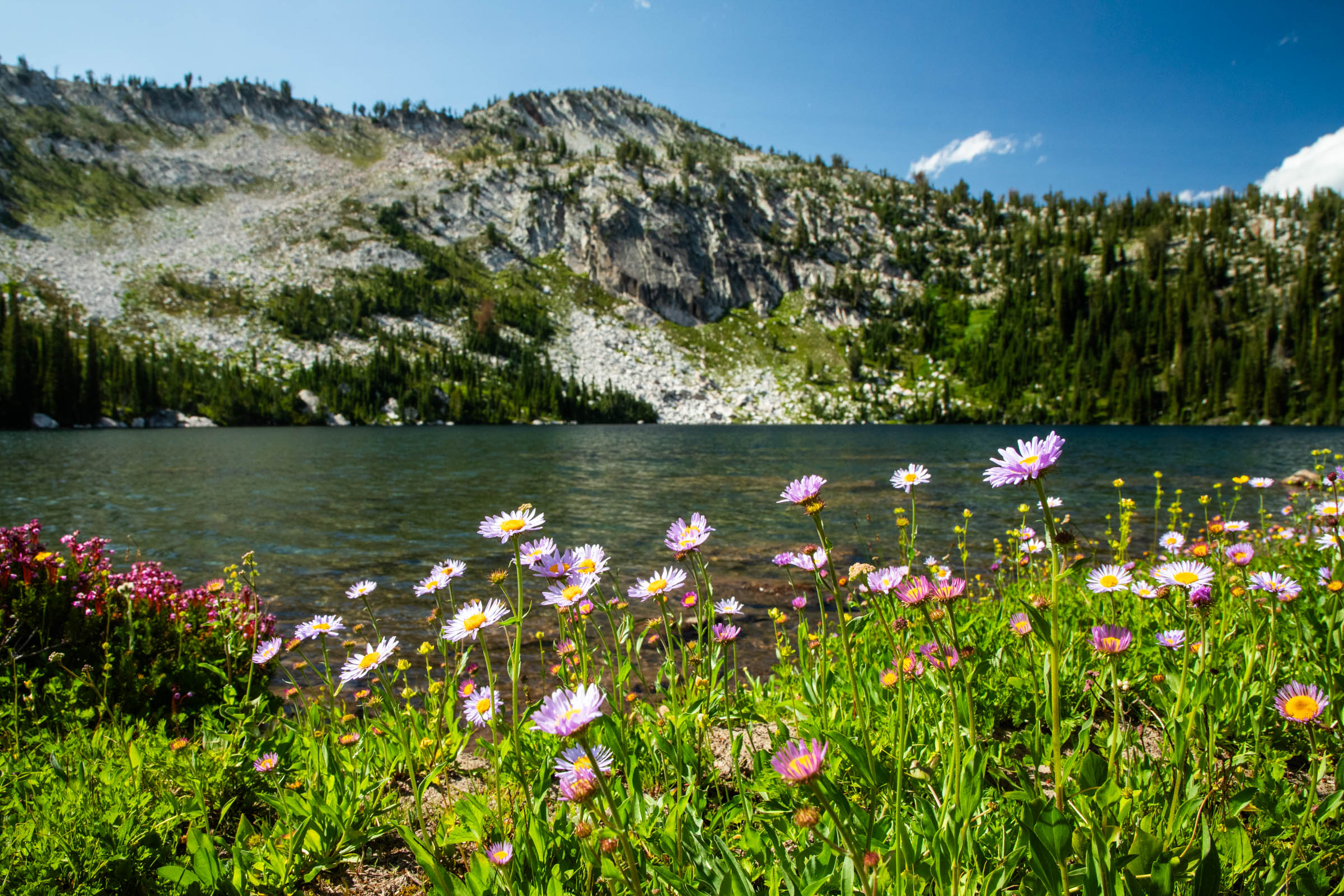
The only other visitors to this small lake were local residents like this Columbian Ground Squirrel.
Cool clear waters like this are the perfect antidote to an otherwise hot dusty day.
Clouds of microscopic flies glow in sunbeams. These fragile organisms might only live aloft for a single day; hatching, mating, and dying before the sun ever sets.
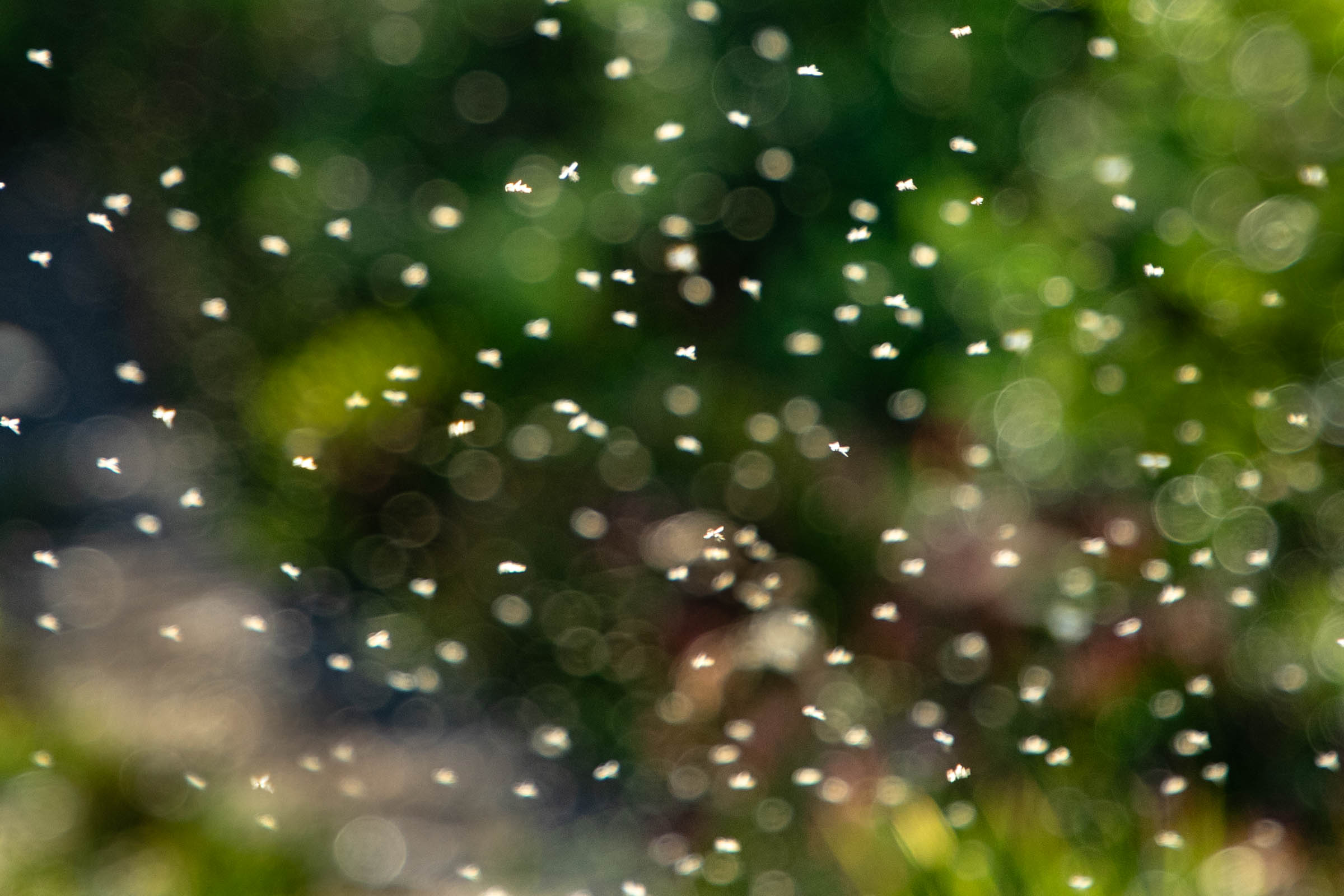
A Clark’s Nutcracker calls from overhead. These intelligent and complex corvids love to feed on the cones of Whitebark Pine, of which there is a healthy population in the Wallowas. Many other parts of the west have seen forests of Whitebark Pine succumb to a fungus. When it dies, the Clark’s Nutcrackers go as well.
At night, the sky comes alive with stars. Of course, it doesn’t quite look like this image – an exposure taken over about 4 minutes. In this image, the stars are slightly streaked, the clouds very streaked, and the sky a bit more colorful. But the feeling of being there, of standing on the side of the lake while the clouds drift by and stars slowly twist overhead… is very much like what you see in this photo.
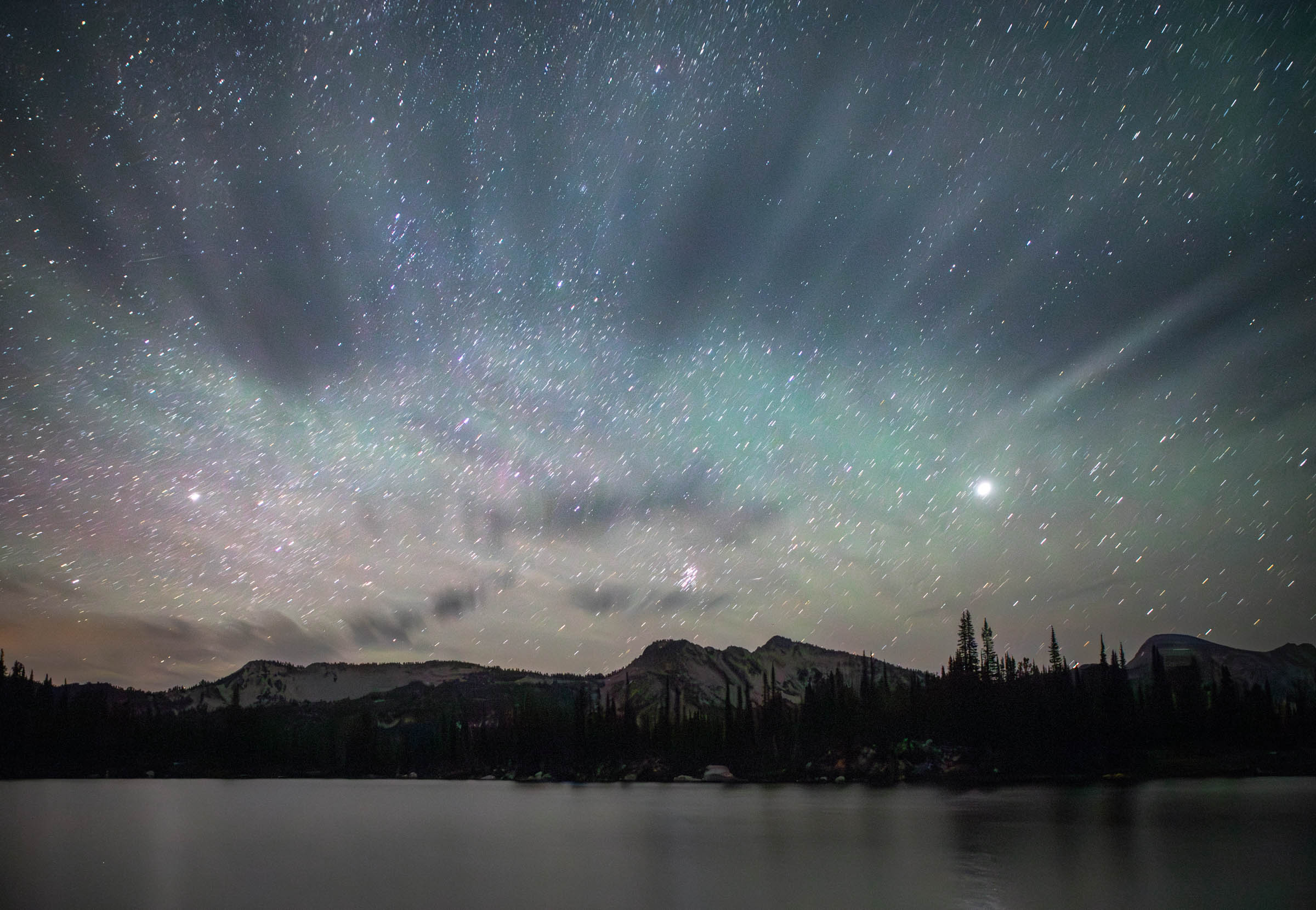
The next morning, it was time to head down to the road, the car, and the life beyond.
